HUN: 3 perc vegytiszta cukiság két félénken barátkozó fülescsacskótól...:)
ENG: 3 minutes pure cuteness of two shy meeting donkeys on the Camino...:)
HUN: 3 perc vegytiszta cukiság két félénken barátkozó fülescsacskótól...:)
ENG: 3 minutes pure cuteness of two shy meeting donkeys on the Camino...:)
HU:
Szokták kérdezni, miből élek, ennek kapcsán muszáj felvázolnom a pénzügyi gazdálkodáshoz való viszonyomat. A munka ünnepére szántam, de idén az anyák napjával esett egybe, úgyhogy inkább csúsztattam egy nappal... boldog hétfőt! :)
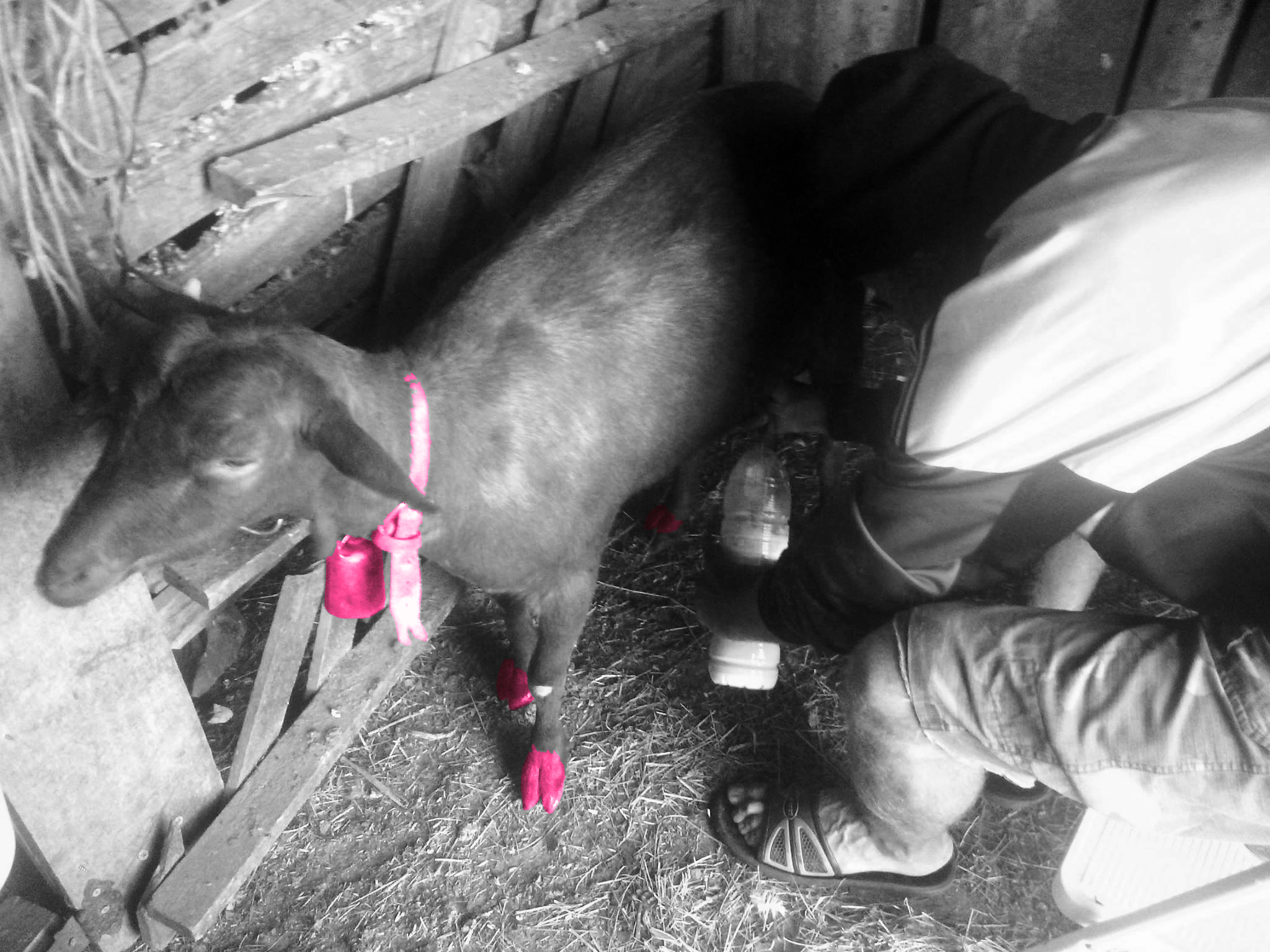
Önkéntes munka egy foncebadóni zarándokszálláson kajáért, fedélért: kecskefejés
...
Szabó Péter motivációs tréner e hónap 21-22-én Münchenben tart fejlesztőkurzust Hogyan éljünk szenvedéllyel és hogyan teremtsünk pénzügyi jólétet címmel.
A kedvezményes kétnapos belépő a rendezvényre 190 euro. Az mai középárfolyamon számítva mintegy 58900 forint.
Hagyok időt emészteni.
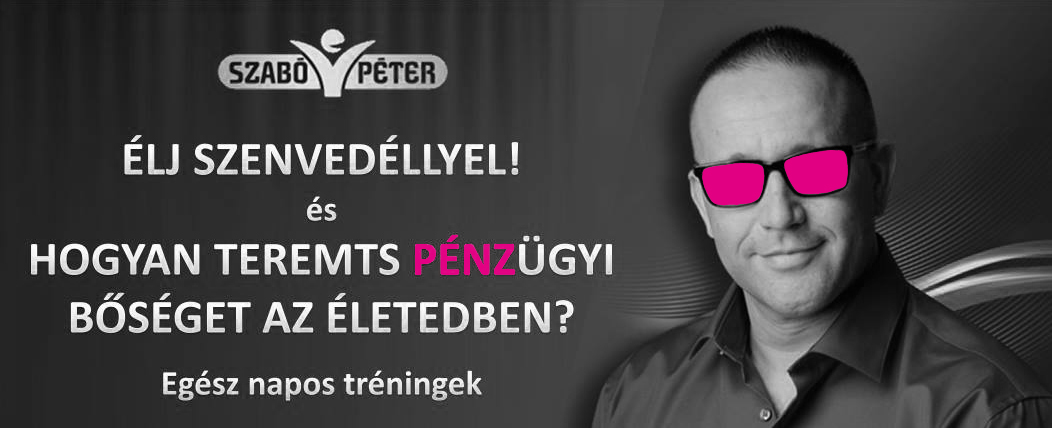
„Mi lehet az, ami minden pénzt megér? Hát a pénz!” /Belga/
...
Én először kajak azt hittem, hogy ebben benne van Pestről az oda-visszaút Münchenbe.
Nos, azt nem tudnám hirtelen megmondani, hogy kell szenvedéllyel élni, de az anyagi jólét megteremtéséhez máris itt egy tanács, ingyen:
NE KÖLTS SZÁZKILENCVEN EUROKAT FASZSÁGOKRA!
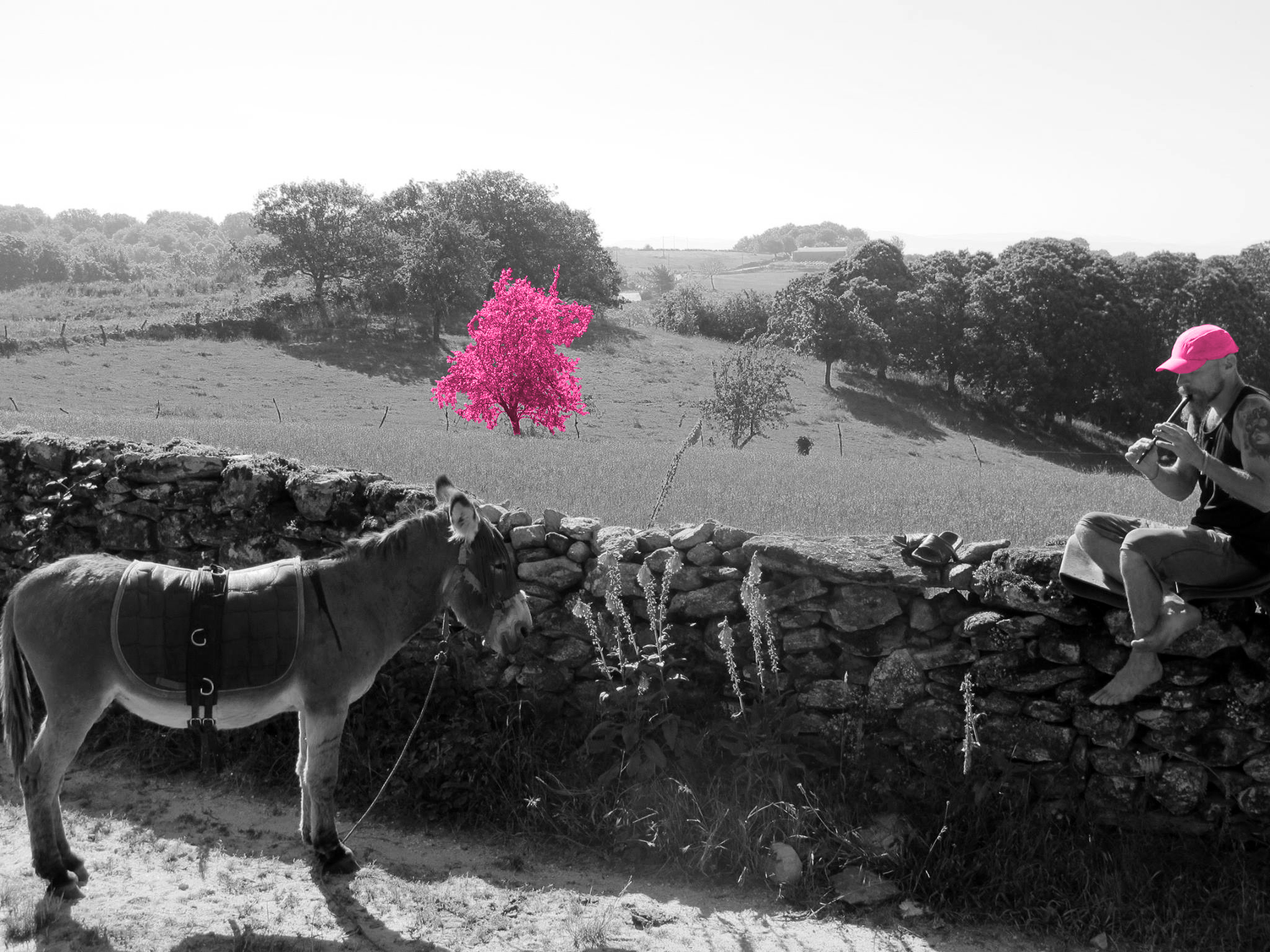
A naaagy furulya/állatsimogató. (Ki kellett volna szólnom ilyeneket, hogy "bízz önmagadban!" vagy hogy "minden álmod megvalósítható!", és akkor máris motivációs tréning is... váááá.)
Mintegy 7 és fél milliárd ember él a Földön. Egyszerűen lehetetlen, hogy mindenki ún. "anyagi bőségben" éljen, legalábbis a nyugati fogalmak szerint. Éppen ezért, bár nem tudom, mit akar mondani ez a nyerészkedő bájgúnár a müncheni előadásán, az biztos, hogy a nyugati individualizmus alapjaira építve fogja mondani, amit az emberek nagy része – szocializációnkból adódóan – természetesként fogad el, de nem az!
Az ember közösségi lény, már korai törzsfejlődése is csak egymás kölcsönös segítésére alapozva volt lehetséges. A jelenlegi gazdasági rendszer (mikro- és makroszinten is) azon alapul, hogy a saját anyagi hasznodért kell tevékenykedned, aminek a mások anyagi kára az ára. Az ilyet úgy hívják, hogy "zéróösszegű játék", és józanésszel könnyen belátható: ha adott mennyiségű, véges erőforrásból kell gazdálkodnunk, akkor te minél többet veszel ki belőle, a többieknek annyival kevesebb marad.
Az általános anyagi bőség elérésének egyetlen eszköze a fennálló gazdasági rend és a hozzá kapcsolódó beteg morál lecserélése. Fokozatosan, lépésről lépésre, avagy radikálisan, forradalmi úton; ez valójában már részletkérdés. A lényeg a konszenzusos igény lenne a változásra, melynek magva a Föld bolygóra és a rajta élő lényekre egységes szervezetként tekintő holisztikus szemlélet, a gazdasági helyett etikai alapú élettér-szervezés, az ezekből fakadó fenntartható gazdálkodás és társadalmi szolidaritás, a mértékletességben meglelt öröm, valamint a társadalom által mesterségesen felkeltett anyagi igények leváltása szellemi és spirituális igényekre.
Aki nem ezt propagálja, az nem a világ előremozdításán dolgozik, hanem a fejlődés visszatartásán, és így – mivel a "motiváció" kifejezés a latin mozdít, mozgat szóból származik – kurvára nem nevezhető motivációs trénernek (bármit is jelentsen ez a „szakma” őszerinte). Viszont az emberi hiszékenységen élősködő kókler köcsögnek: simán!
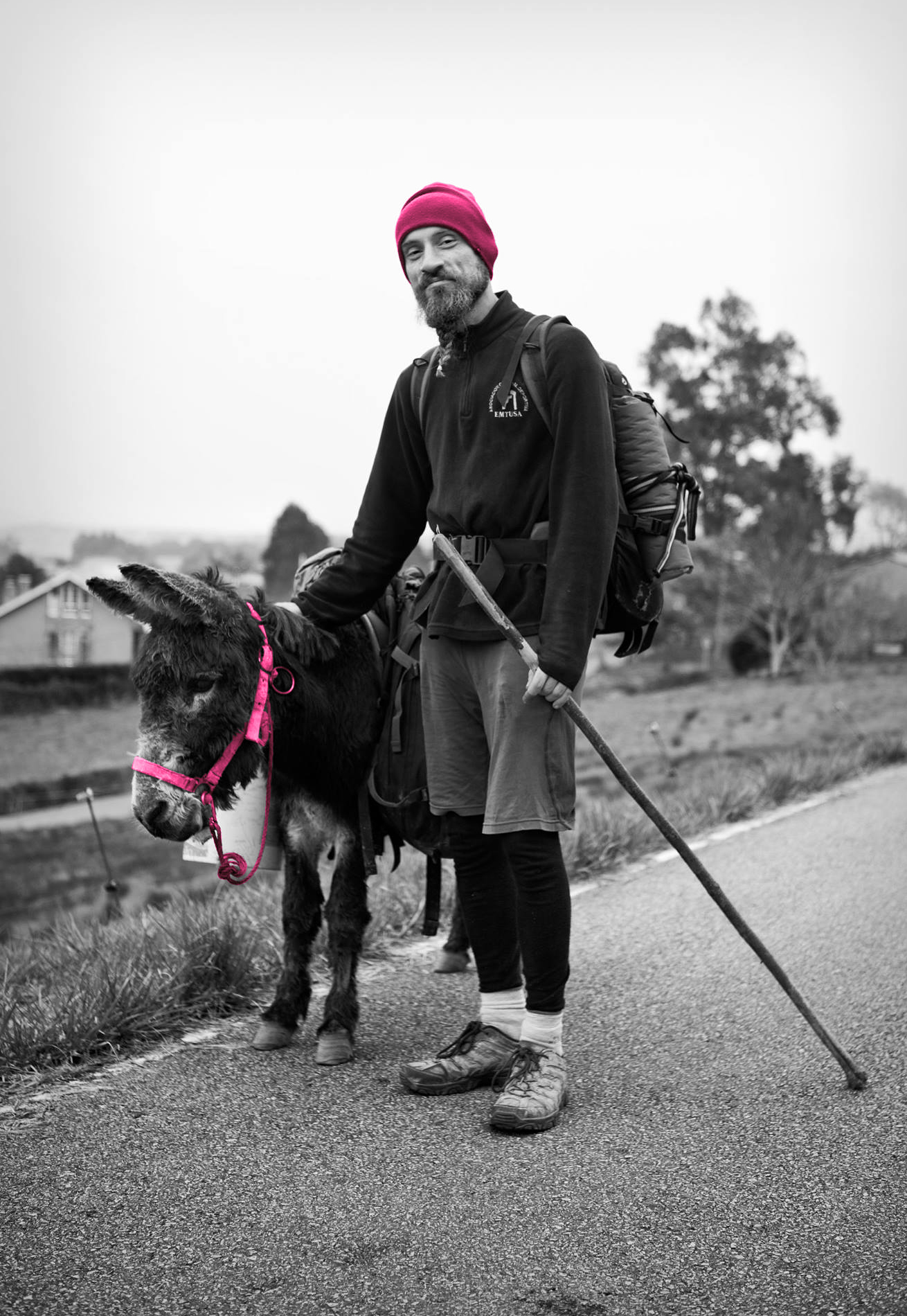
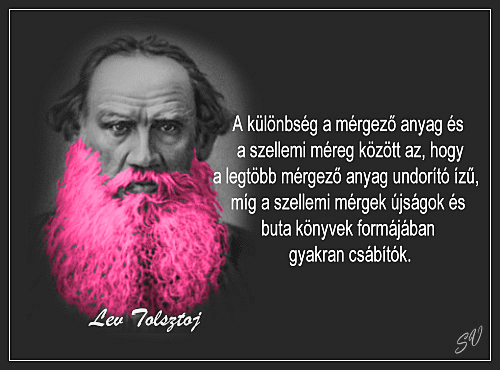
Tolsztoj. A másik képen szintén Tolsztoj: ő volt a kettes számú szamaram...
...
190 euro? Ez most tényleg komoly???
...HATVAN ROPIT AKKOR SEM ADNÉK KI, HA LENNE ANNYIM, ÉS A SÍRBÓL KIKELT ALBERT EINSTEIN TARTANA WORKSHOPOT "AZ ÉLET ÉRTELME, PLUSZ MEGOLDÁS A VILÁG ÖSSZES PROBLÉMÁJÁRA" CÍMMEL, ÉS A KLASSZIKUS FELÁLLÁSÚ THE BEATLES LENNE AZ ELŐZENEKARA!!!
------------------------------------------------------------------------------------------------------------------------------------------
----------------------------------------------------------------------------------------------------------------------------------------
EN:
Many ask me how I finance my life. To answer this question I should tell about my attitude of financial management first.

Volunteering in a private albergue of Foncebadón for bed and food: milking the goats
A Hungarian motivational trainer (please don’t ask me what this is and what the reason of its existence is) called Péter Szabó holds a developmental course entitled How to live with passion and how to create material wealth, on the 21-22 May in Munich. The 2-day discount ticket to this event costs 190 Euros.
I allow you a little time to process it.
…
What could worth any money? The money, of course!
…
First I totally believed it contains the return-ticket to Munich.
Well, I couldn’t tell you immediately how to live with passion, but here’s one advice to create the material wealth, for free:
DO NOT SPEND ONE HUNDRED AND NINETY EUROS ON BULLSHITS!

The world famous flute concert / petting zoo combo :) (I should have said "trust in yourself" and "you can make all your dreams come true" and so... That way it's already a motivational training in the same time... woaaaa....)
Besides that it may worth to clarify some important economic conceptual foundations.
About 7 and a half billions of people live on planet Earth. It’s just simply impossible for everyone to live in material well-being, at least according to western definitions. This is exactly why – however I’m not sure what this profiteering piece of charm wants to say at his presentation in Munich – one thing is sure, it will be based on western individualism which most people – given from our socialization – accept as natural, but it’s not!
The human is a social creature; even its early evolution was only possible based on the reciprocal support of each other. The basis of the current economic system (both in micro and macro levels) is that you have to work for your own material profit, the price of which is others’ material damage. This is called “zero-sum game”, and it’s pretty obvious: when it’s a finite resource of given quantity we all have to manage, then the more you take from it, the less remains to the others.
The only way to achieve general material abundance is replacing the current economic system and the related sick morality. Gradually, step by step, or radically, in a revolutionary way; it’s just a question of detail. The point would be the consensual need for change, the core of which is the holistic approach considering the Earth and its creatures as a united organisation, an ethical based living space organization instead of the economic based, sustainable economy and social solidarity resulting from these, pleasure found in temperance, and replacing the artificially aroused material needs with intellectual and spiritual needs.
Those who don’t aim to promote this, are not working on mainstreaming of the world, but actively holding back the development, and this way – as the expression “motivation” comes from the Latin word move, mobilize – they cannot be called motivational trainers (whatever that “profession” means according to them). However, to that trickster bastard parasitizing on human gullibility: smoothly!

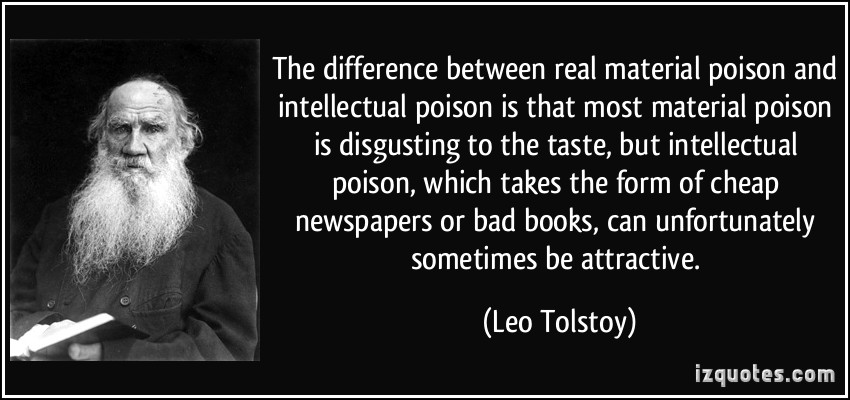
Tolstoy. In the right side photo you can see my donkey Nr.2. also called Tolstoy...
190 Euros???
SHIT, I WOULDN’T GIVE IT EVEN IF I HAD IT, AND FROM HIS GRAVE THE JUST AWAKENED ALBERT EINSTEIN WOULD HOLD A WORKSHOP ENTITLED „THE MEANING OF LIFE, PLUS SOLUTION TO ALL THE WORLD’S PROBLEMS”, AND THE OPENING ACT WOULD BE THE BEATLES IN CLASSIC SET-UP!!
HUN
Tavaly október 31-én a miskolci gyökerű Paddy and the Rats játszott Galiciában, a Castañazo Rock fesztiválon, úgyhogy jó helyi parasztként nyilván idvezeltem a mívész urakat. Főszerepben a jó öreg Rocinante és a tetovált Solomon, a két zarándoxamár. (Pulcsi félig bedugva, félig kint a legnagyobb! Egyszerre divatos és praktikus... valójában nem számoltam vele, hogy Rocinante odébb fog menni...:D)
ENG
October 31, 2015, Paddy and the Rats, pub 'n' roll band from my hometown Miskolc played at the Castañazo Rock festival in Chantada, Galicia. So I welcomed them with this short video, starring the good old Rocinante and the tattooed Solomon, the two Camino donkeys. (Sweater half plugged in the shorts, half out, rules! Comfortable and fashionable at the same time... actually I did'n t expect that Rocinante moves away...:D)
HU:
Felmérések alapján Európa kulturális értékei közül a legszélesebb körben ismert elem nem más, mint Don Quijote története. A világ 100 legjobb regényét a kultúrára tett hatásuk szempontjából összeállító bizottság 99-et egyenrangúként sorol fel, de kiemeli közülük Cervantes barokk művét a búsképű lovagról.
Ezeket a Wikipediától tudom. Ennek alapján azt viszont mindenki tudja magától, miről szól a Don Quijote: egy őrültről, aki átszeli Spanyolországot és közben ostobaságokat művel.
Az angol romantikus költő, Byron szerint Don Quijote története a világirodalom legszomorúbb sztorija. De mitől olyan szomorú ez a mókás lovagparódia? Talán, mert az önjelölt hős útja során egyre világosabbá válik, hogy valójában nem ő az igazi őrült, hanem a kor, amelyben élnie kell, és a társadalom, amely körülveszi.
De egyben ez teszi őt példaképpé! Egy erkölcsileg kiüresedett világban keresi az értéket, és magasról tesz a valóságra, nem köt kompromisszumokat. Don Quijote egy általa magasztalt korba, a lovagi értékek világába vágyik, és belül teremti meg azt. Szomorú a történet, mert a külső, materiális valóságban szükségszerű a bukása, de erkölcsi fölénye soha, egy percig sem inog meg. Vajon melyik a fontosabb, illetve elválasztható-e egyáltalán a kettő egymástól?
/Cervantes és regényhősei Madridban (Plaza de- España)/
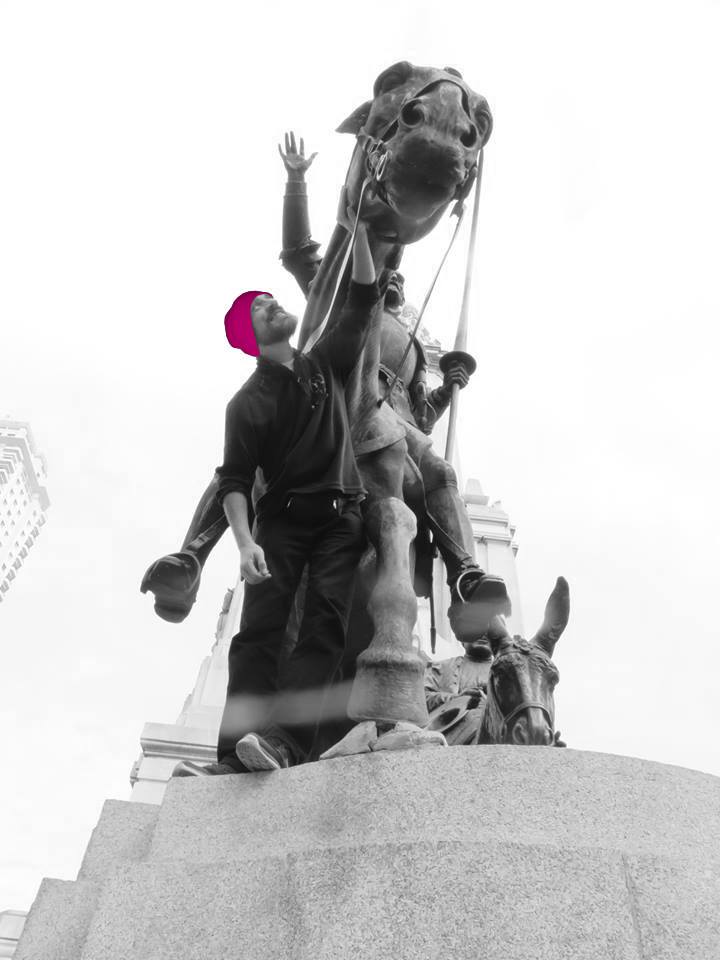 A legatyásodott la manchai nemes paripája egy öreg, csontos csődör, akit Rocinanténak nevez. „Rocin” a régi kasztíliai nyelvben gebét jelent, az „ante” (=előtt, korábban) pedig névutóként változtat a szó jelentésén: a ló korábban egy gebe volt, de már a világ legjobb lova, akinek erejéről és gyorsaságáról hőstörténetek regélnek. A névadással tehát a lovag önmagára reflektál: tisztában van a külső valósággal, csak nem hajlandó alkalmazkodni hozzá. Egy nagyon erős, hosszan kifejtett monológjában elmagyarázza: azzal is tisztában van, hogy plátói szerelme, a szűziesen gyönyörű Dulcinea valójában egy tenyeres-talpas némber, akin már végigment a fél falu, de az ő hősi élete szempontjából ez teljességgel irreleváns, hiszen neki egy bálványra van csak szüksége, akit a zászlajára tűzve végrehajthatja hőstetteit. Mi ez, ha nem a fenomenológiai pszichológia és a pozitív szemlélet ideológiájának elővételezés Cervantes részéről, korát vagy 4 évszázaddal megelőzve?! Te teremted a valóságodat, a lelkiállapotod nem az ún. tényektől, hanem az értelmezésedtől függ.
A legatyásodott la manchai nemes paripája egy öreg, csontos csődör, akit Rocinanténak nevez. „Rocin” a régi kasztíliai nyelvben gebét jelent, az „ante” (=előtt, korábban) pedig névutóként változtat a szó jelentésén: a ló korábban egy gebe volt, de már a világ legjobb lova, akinek erejéről és gyorsaságáról hőstörténetek regélnek. A névadással tehát a lovag önmagára reflektál: tisztában van a külső valósággal, csak nem hajlandó alkalmazkodni hozzá. Egy nagyon erős, hosszan kifejtett monológjában elmagyarázza: azzal is tisztában van, hogy plátói szerelme, a szűziesen gyönyörű Dulcinea valójában egy tenyeres-talpas némber, akin már végigment a fél falu, de az ő hősi élete szempontjából ez teljességgel irreleváns, hiszen neki egy bálványra van csak szüksége, akit a zászlajára tűzve végrehajthatja hőstetteit. Mi ez, ha nem a fenomenológiai pszichológia és a pozitív szemlélet ideológiájának elővételezés Cervantes részéről, korát vagy 4 évszázaddal megelőzve?! Te teremted a valóságodat, a lelkiállapotod nem az ún. tényektől, hanem az értelmezésedtől függ.
Társa és barátja, a szintén jó szándékú, de végtelenül egyszerű Sancho Panza a másik nagy bölcs. Őt nem érdekli a hősi hírnév, szíve szerint semmilyen magas eszmét nem követne, csak jókat enne-inna, élne gondtalanul, békében. Ennek megfelelően, Don Quijote fegyverhordozójaként rendkívül szórakoztatóakat vitázik urával, aki azzal kecsegteti, hogy kalandjaik sikerével egy sziget kormányzójává teszi őt. Amikor pedig – puszta heccből – tényleg kormányzó lesz belőle egy epizód erejéig, kiderül, hogy gyakorlatias egyszerűsége valódi bölcsességet rejt: egy csomó probléma csupán álprobléma, ha nem fogadjuk el természetesként azt a rengeteg természetellenes szennyeződést, amit a kor társadalma traktál ránk.
Sancho hátas jószága egy szamár, akire a magyar fordítás „a Szürke”-ként hivatkozik (eredetileg Rucio, ami a régi spanyolban a szürke egyik árnyalata lehet az ötvenből: a szamárszürke). Amikor a spanyolok megtudják, hogy van egy Rocinantém, aki egy szamár, meg szokták kérdezni: akkor én most Don Quijote vagyok vagy Sancho. Nos, mindkettő. Ahogy én vagyok a tücsök és a hangya is.
Vitázok is magammal vérre menően. Ez a blog is az önmagammal folytatott polémiák részeredményeit készül összefoglalni…
Don Quijotét érzékenysége bezárkózáshoz (ma tán úgy mondanánk, hogy depresszióhoz) vezette: kora értékválsága elől könyvtárába csukta magát a lovagi történetek közé. De végül kitört, és – hogy úgy mondjam – abbahagyta álmodni az életet, és elkezdte élni az álmait. (Bizony, a naplementés képekre írható, Facebookra posztolható, Oravecz Coelho-i semmitmondó, nyálas hatásvadászat klisémentes verzióit kevésbé szájbarágósan, tartalommal is ellátva megtalálhatod a klasszikus szépirodalomban, hajrá.) Ez lenne a projektem lényege. Depresszió vagy rezignáció helyett álmok és küzdés, plusz némi kultúrmisszió. Boldoggá tenne, ha önpolémiám másnak is ihletet, erőt vagy motivációt adhatna. Tanár és pszichológus lennék, a hivatástudat él; problémám a rendszerrel van, nem a szakmai identitásommal.
Segítőm a bennem élő Sancho Panza, aki csak a természetből fakadóhoz alkalmazkodik, nem érdekli semmilyen cafrang, megkérdőjelez mindent, ami fizikai vagy mentális energiát igényel, és nem szükséges vagy hasznos. Így vagyok én például a pénzzel, ami minek. A kérdésre, hogy mi természetes és mi nem, maga a természet adja meg a választ, minden nap, minden pillanatban. A természet közelsége rendszeres, vagy inkább folyamatos istenélményt provokál, az istenélmény pedig az élet értelmességébe vetett hitet, ami nyilvánvaló alapfeltétele a boldogságnak. Nekem ezért fontos, hogy növényekkel és állatokkal körülvéve, az elemeknek és a természeti erőknek alá- és mellérendelve, éppen ezért velük összhangra törekedve éljem mindennapjaimat.
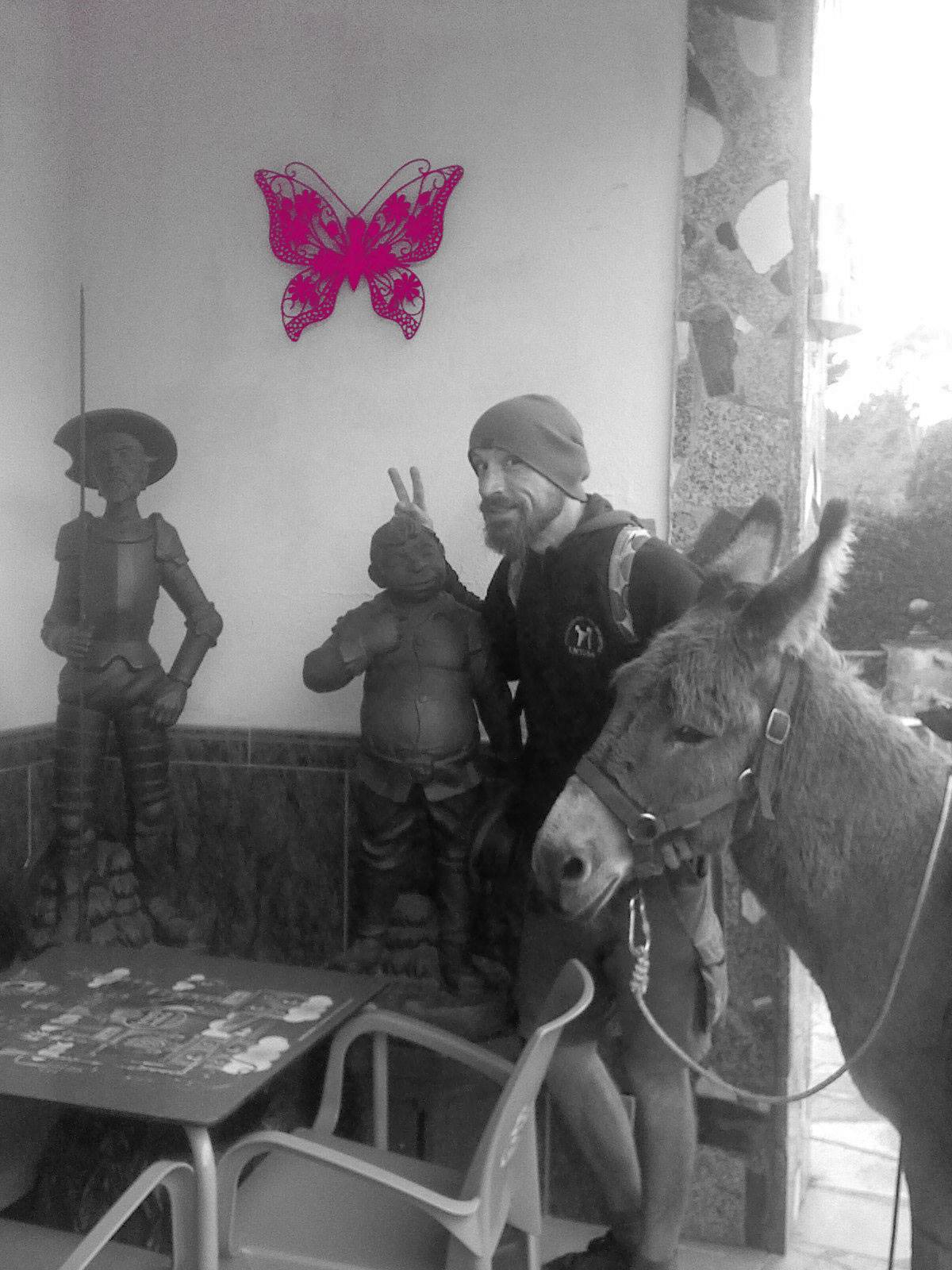
Szóval ezért Rocinante. És erre rímel ugyebár "Rolandante".
Roland, az ófrancia mondahős-druszám Don Quijote egyik lovagi példaképe. Andante spanyolul és olaszul is ugyanazt jelenti, zenei utasításként ismerhetjük: sétálva, lassacskán lépegetve – mintha csak az utam kottája felé lenne írva. A poklot és a mennyet is megjárt reneszánsz Dantéról már ne is beszéljünk.
A chilei alkimista Antonio[1] indián kártyákból azt olvasta ki, hogy a totemállatom a gyík. Magamtól a szamárra tippeltem volna, haha. A gyík a kő alatti hűvösben és biztonságban álmodja a jövőt, és a megfelelő pillanatra vár, hogy előbújhasson. Talán itt az idő előbújni a Don Quijote-i megmérettetésekhez, vállalva akár a bukást is…:)
[1] Galicia tartományba érve, Triacastelából két különböző úton juthatunk el Sarria városkába: indulhatunk Samos vagy San Xil felé is. Antonio ásványszakértő, egyike a sok látni-érdemes embernek, akiket megismerhettem; a Camino de San Xil mentén lakik. Kb. fél km-rel kell letérni a caminoról, hogy ráleljünk. Az úton egy tábla hirdeti ásványkiállítását, amit bárki meglátogathat, ihat egy teát, relaxálhat a képzőművészeti alkotásaival berendezett meditációs szobában stb.
----------------------------------------------------------------------------------------------
EN:
According to various studies the story of Don Quixote is the most well-known among Europe’s cultural values. A commission collecting the world’s 100 best novels from the aspect of their cultural impact, lists 99 peer to peer amongst them, meanwhile highlighting Cervantes’ baroque masterpiece of them all.
It seems that everyone knows what Don Quixote is about: a crazy fellow crosses Spain and meanwhile doing silly things.
According to the English romantic poet Byron, Don Quixote’s is the saddest story of the world literature.
But why? Why is this funny knight parody actually sad? Maybe because during the voyage of this self-proclaimed hero it becomes absolutely clear that in fact not he is the real mad one, but the age, in which he has to live as well as the society surrounding him.
But it is also what makes him an exemplar! He is searching for value in a morally empty world and he neither gives a shit about the reality, nor enters into compromises. Don Quixote longs for his vaunted era, for the world of knightly values, and he creates it within himself. The story is sad for his inevitable fall in the external materialistic reality, nevertheless his moral superiority is never shaken, not even for a second... Which is the more important? and also whether these two are separable?
/Statue of Cervantes and his novel's heroes in Madrid/ The steed of this impoverished nobleman of La Mancha is an old, bony stallion that he names Rocinante. “Rocin” means nag (~a cripled horse) in old Castilian language, and “ante” (=before, previously) as a postposition changes the meaning of the word: the horse had been an old bad nag, but now it is the world’s best steed, of whose power and strength heroic legends speak. Thus, by naming his horse the knight reflects on himself: in fact, he’s fully aware of the external reality, he just refuses to adapt to it. In one of his very powerful, lengthy monologues he explains that he is also aware that his platonic love, the chastely beautiful Dulcinea is actually a blowsy peasant cunt that half of the village population has already done, still it is irrelevant from his heroic aspect, because he needs an idol with whom on his flag he can perform his feats. What is it if not Cervantes’ anticipation of the phenomenological psychology and the positive approach, some 4 centuries ahead of his age: you create your own reality; your state of mind depends not on the facts, but on your personal interpretation.
The steed of this impoverished nobleman of La Mancha is an old, bony stallion that he names Rocinante. “Rocin” means nag (~a cripled horse) in old Castilian language, and “ante” (=before, previously) as a postposition changes the meaning of the word: the horse had been an old bad nag, but now it is the world’s best steed, of whose power and strength heroic legends speak. Thus, by naming his horse the knight reflects on himself: in fact, he’s fully aware of the external reality, he just refuses to adapt to it. In one of his very powerful, lengthy monologues he explains that he is also aware that his platonic love, the chastely beautiful Dulcinea is actually a blowsy peasant cunt that half of the village population has already done, still it is irrelevant from his heroic aspect, because he needs an idol with whom on his flag he can perform his feats. What is it if not Cervantes’ anticipation of the phenomenological psychology and the positive approach, some 4 centuries ahead of his age: you create your own reality; your state of mind depends not on the facts, but on your personal interpretation.
His fellow and friend, an also good-willing, but extremely simple peasant Sancho Panza is the other genuine wise. He is not interested in the heroic fame, his heart wouldn’t follow any fancy ideology, he would just have eat and drink and live his life in peace and rest. Accordingly, as Don Quixote’s squire, he continuously argues in a very entertaining way with his master, who promises to make him the governor of an island following the success of their adventures. However, when he – just for the hell of it – indeed becomes a governor for an episode, it turns out that his practical simplicity covers actual wisdom: a lot of problems are just false problems, if we don’t accept those many unnatural contaminants of the actual age’s society.
Sancho has a donkey, to which the Hungarian translation refers as „the Grey” (originally Rucio, which must be one of the shades of fifty: the donkey-grey, I guess, hehe). When Spanish people learn about my Rocinante who is a donkey, they frequently ask: am I now Don Quixote or Sancho?
Well, both.
I’m also debating with myself properly. Actually this blog is to summarize the partial results of polemics with myself…
Don Quixote’s sensitivity leads him to isolation (maybe today we would call it depression), he closed himself into his own library, among the chivalric stories, away from his age’s crisis of values. But finally he broke out and – so to speak – stopped dreaming the life and started living his dreams. (Certainly, cliché-free versions of meaningless Coelho-like claptrap bullshit, writable at sunset pictures and postable on Facebook, can be found less chewy, also supplied with content in the classic literature, go for it!;)) So this would be the essence of my project. Dreams and struggle instead of depression or resignation; plus some cultural mission. It would make me happy if – besides my self-polemics – this would give idea, strength or motivation to others, too. I’d be a teacher and a psychologist, is not it? So the sense of vocation is working; I have problem with the system, not with my professional identity.
My assistant is the Sancho Panza within me, who only adapts to things originate from nature, who is not interested in fringes, and who questions everything requiring physical or mental energy but being unnecessary or useless. So is my relation with e.g. the money (but obviously I will talk about it later regarding my commune experiences and plans). To the question what is natural and what is not, nature itself gives the answer, day by day, in every moment. The closeness of nature provokes regular or rather permanent God experience, which in turn gives faith that life is meaningful, which is an obvious precondition for happiness. This is why it is important to me to be surrounded by plants and animals, to be at the mercy of natural forces, and therefore, to live my everyday life by seeking harmony with them.

Well, that’s why it is Rocinante. And this rhymes with Rolandante:
Roland, my Old French mythical hero-namesake is one of Don Quixote’s chivalric role models. Andante means the same both in Spanish and in Italian, we may know it as musical instruction: slowly, step by step – as if it were written above the music sheet of my journeys. Not to mention the renaissance Dante who’s gone through hell and heaven...
Having read from Indian cards, The Chilean alchemist, Antonio* told me that my totem animal is the lizard. Hmm, I would have sworn it is the donkey. The lizard dreams the future beneath a stone, in the coolness and safety it gives, and waits for the right moment to creep out. Maybe time has come to creep out for the feats similar to Don Quixote’s, even while considering the risk of failure...:)
* Arriving in Galicia, we can take two different ways from Triacastela to Sarria: we can depart to Samos or San Xil as well. Antonio is a mineral expert, one of those very interesting people who I had the chance to get to know; he lives along the Camino de San Xil. We can find him by coming off the Camino with appr. half km. His mineral exhibition is indicated by a sign along the road, which you can visit and also drink a tea, relax in the meditation room furnished with his works of art etc.
HUN:
Meséltem, hogy Céhá barátommal videoblog vagy/és dokumentumfilm forgatását terveztük a Caminon, és ehhez támogatókat kerestünk. Azt viszont nem meséltem, hogy egyikünk sem tudott spanyolul, és a projekt részét képezte volna egy másik barátom is, akinek szintén van némi filmes tapasztalata, és egy nyarat már eltöltött Andalúziában tűzzsonglőrködéssel, makog valamennyi kásztejjánót.
Az egyik sokat emlegetett caminos közhely, amit szinte minden zarándok átél: a zarándokúttól soha nem azt kapod, amit vársz vagy eltervezel, hanem azt, amire valójában szükséged van. Én ezt úgy cseleztem ki, hogy személyes célomat így fogalmaztam meg: azt várom a Caminotól, amire valójában szükségem van. A csel sikerült…:)
Itt pedig következzék hármunk szponzorvadász projektterve:
Szinopszis
Célok
Korunk anyagiassága és az ember természettel való kapcsolatának megromlása közös tőről fakadnak. Ez az alapgondolata az egyre szaporodó alternatív társulásoknak, amelyek az anyagias-technokrata korszellem antitéziseként igyekeznek lépéseket tenni az önellátás felé. A városi hajszától megcsömörlött ember visszatérését a fenntartható és megújuló forrásokhoz a Föld szórványos immunreakciójának is tekinthetjük, hiszen a világgazdaság működését meghatározó rendszer hosszútávon egyre inkább tarthatatlannak bizonyul.
A társadalmi dezintegráció és a pénz értékmérőként való kiiktatása természetesen számos ellentmondást szül, és számtalan nehézségbe ütközik. Tervezett filmünk ezen ellentmondások és nehézségek mikroszintű feloldását keresi, miközben szem előtt tartja a lehetőséget, hogy tökéletes megoldások talán nem is léteznek. Szempontunkból maga a keresés folyamata lényeges, amelyet hagyományosan egy út szimbolizál. Erre az utazásra megfelelő tradíciókkal és infrastruktúrával (avagy a jelen kor viszonylatában inkább „anti-infrastruktúrával”) rendelkezik a Szent Jakab zarándokút, a Camino de Santiago, amelyet a három huszonéves készítő az elmúlt korok kolduló peregrinusaihoz hasonlóan, indulótőke nélkül, egy szamárral jár végig. A film ennek az útnak a külső-belső történéseit örökíti meg.
A csacsira az ismert spanyol patáskarakter, Rocinante nevét ruházzuk: utunkra letűnt értékektől vezérelt modern Don Quijoték kísérleti zarándoklataként tekintünk.
A hagyományos vallások szerepének visszaszorulása spirituális űrt hagyott maga után a nyugati világban, amelyet a fiatalok jelentős része egyházaktól független, eklektikus elemeket tartalmazó, személyes vallásossággal igyekszik kitölteni. Ebben rend szerint humanitárius elvek kombinálódnak önmegvalósító illetve öntranszcendáló törekvésekkel. Az effajta egyéni vallásosságnak – akárcsak a szervezett vallások esetében – gyakran maga a Camino is katalizátora, sőt, megalapozója.
Az első ellentmondás azonnal adja magát: ahhoz, hogy víziónkat céljainknak megfelelően bemutassuk, technikai berendezésre – kamerára, mikrofonokra, adathordozókra – van szükség.
Módszer
A meghatározott céltémák közül az anyagiasság ellenében áll a pénzalapot nélkülöző, konzumigényeket minimálisra redukáló életmód; a természettől való elidegenedéssel szemben a félnomád körülmények és egy szamár társsá fogadása – illetve az ezek nyomán fellépő felelősségvállalás. Saját élményeink és reflexióink megörökítésén kívül a felvételek egy része érdekes karakterek képsoraival, interjúival operálna, ily módon sorsokat feldolgozva, és közös pontokat keresve a fentebb említett egyéni vallásosság jelenségvilágában.
A francia-spanyol határtól Santiago de Composteláig tartó francia utat (Camino Francés) járnánk végig, az óceánparti Fisterráig meghosszabbítva. A kiutazáson és némi túrafelszerelésen kívül az egyetlen előirányzott költség a málhanyereggel ellátott, patkókkal erősített szamár, amelyre az út elején tennénk szert, és a végén válnánk meg tőle. A hazaút költségeit az érte szerzett ellenjuttatásból reméljük, ennek kudarca esetére fenntartva az improvizálás lehetőségét. Út közben magunk és szamarunk fenntartására kapaszkodóval szolgálhatnak olyan készségeink, mint a tűzzsonglőrködés, gitározás, népi furulyajáték, amikhez a szükséges eszközöket Rocinante hordozza. Az út mintegy 890 km, megtétele 35-40 napot venne igénybe (ez nyilván az állattól is függ). Az indulást a nyár első napjaiban, június elején tervezzük.
A körülményektől függően napi egy-két órányira előirányzott felvétel megvágása utólag történik – egyetlen hosszabb (70-80 perc körüli) filmmé, vagy akár rövidebb részekből álló sorozattá.
A koncepcióból várhatóan számos kérdés fog fakadni, amelyekre további kérdéseket igyekszünk feltenni, szándékunk szerint konstruktív válaszlehetőségeket felkínálva:
-Mennyire vált elengedhetetlenné problémáink megoldásában a technika? Ki lehet-e lépni a fogságából? Fogság-e ez egyáltalán?
-Milyen kapcsolat alakítható ki az úton társunkká váló állattal? Mire tanít ez a kapocs? Hogyan élhető meg a kapocs fizikai szakadása az út végén?
-A szamaras koldus életmód vagy a kalapozós zenélés nem válik-e maga is haszonorientálttá?
-Célt lehet-e érni a természetre és a közösségi jóindulatra apellálva? Hogyan hidalhatóak át a nyelvi nehézségek és nemzetköziségből fakadó egyéb problémák? Milyen interakciókhoz vezet egy ilyen speciális helyzet?
Nem beszélve a nap mint nap előadódó ismeretlen körülményekről, váratlan problémákról, előrejelezhetetlen kérdésekről, és az út természetéből fakadó spirituális hozadékról.
Készítők
L. Péter: lumpoló avasi rocker (+referenciák)
Sz. Dávid: tüzépes falusi suttyó (+referenciák)
/az önmeghatározást nekik kellett volna kitalálniuk, de nem tették, én meg ennyit tudok róluk, hehe, de már mindegy, mert egyikőjük sem jött végül, úgyhogy film sem lett/
B. Roland: Magyar, filozófia és pszichológia szakos tanár, bölcsész, online hobbipublicista (+referenciák)
/Budapest, 2013. március/
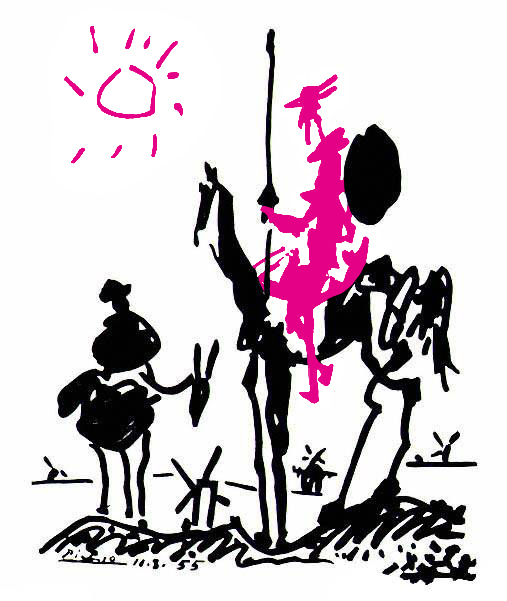
...és a terv tulajdonképpen megvalósult, csak épp társak és dokumentáció nélkül. Utóbbit ez a blogolós platform igyekszik most utólag is pótolni! ;)
------------------------------------------------------------------------------------------------
ENG:
I’ve already mentioned that we’d been planning to make a video blog or a documentary film together with my friend CH during our Camino trip, and for this we’d been searching for supporters. What I haven’t told is that none of us could speak Spanish, indeed a part of the project would have included another friend of mine who also have some experience with movies and had spent a summer in Andalusia as a fire juggler, so he gibbers some Castellano.
One of the much discussed Camino cliches that almost every pilgrim experiences: it’s never what you expect of the pilgrimage what it gives to you, rather you get what you really need.I simply tricked this axiom by drawing up my personal goal like this: I expect from the Camino what I really need. And the trick succeeded… :)
Here’s the sponsor-hunter plan of the three of us:
Synopsis
Goals
Today’s materialism as well as the deterioration of human &nature relationship share a common root. This is the idea behind the growing number of alternative societies trying to take steps towards self-sufficiency, as antithesis of the technocratic-materialistic spirit of this age. People disgusted from urban rush returning to sustainable and renewable resources can be considered as Earth’s sporadic immunoreactions, as the system determining the world’s economy proves to be increasingly untenable in a long term.
Social disintegration and the elimination of money as measure of value result in a number of contradictions and encounter a number of difficulties. Our intended movie is searching for the unlocking of these contradictions and difficulties at a micro level, meanwhile considering the possibility that perfect solutions may not exist. From our perspective, it is the process what interests us, which is often symbolised by a way. For this trip the St. James pilgrimage route (Camino de Santiago) has the appropriate traditions and infrastructure, which route the three young builders walk along accompanied by a donkey without initial capital, similar to the begger peregrines of last ages. The movie captures the external and internal events of this trip.
We’ll name the donkey from the famous Spanish hoofed-character, Rocinante: we consider our trip as anexperimental pilgrimage of modern Don Quijotes, driven by extinct values.
The fact that the traditional religions’ role has diminished left a spiritual space in the western culture behind, which a reasonable part of youth aims to fill with personal religiosity with eclectic motifs, independent of churches. This usually includes the combination of humanitarian principles with self-fulfilling and self-transcendental ambitions. This kind of personal religiosity – just as in case of organized religions –often considers the Camino as its catalyst, or even its foundation.
We immediately face one of the paradoxes: in order to demonstrate our vision according to our aims, we need technical equipment – camera, microphone, data storage, etc.
Method
From amongst the target topics materialism is inconsistent with the cash fund deprived lifestyle reducing consuming needs to a minimum; in contrast to the alienation from nature, semi-nomadic conditions and a donkey as company – and of course as a consequence of these: responsibility. In addition to the perpetuation of our own experiences and reflections, a big part of the captures would operate with pictures and interviews of interesting characters, thereby processing fates as well as searching for common points in the phenomenon of that aforementioned alternative religiosity.
We would walk along the French way (Camino Francés) starting from the French-Spanish border to Santiago de Compostela, extended till the lighthouse of Fisterra.
Depending from the circumstances, the cut of the recording which is planned for 1 or 2 hours a day is made ex post – to a single longer (appr. 70-80 mins) movie, or even to a series consisting of shorter episodes.
Starting from the concept, it is likely that further questions will arise, to which we are trying to raise more questions, possibly offering constructive response options:
Not to mention the unknown conditions, unexpected problems, unforeseen questions and also the spiritual increments arising day after day.
Authors
Péter L.: rollicking rocker from Miskolc Steel City (+references)
Dávid Sz.: a redneck villager hippie from the building yards (+references)
/they should have given their own definitions, but they haven’t done it, and this much I know of them, hehehe, whatever, neither of them joined in the end, so no movie’s been directed/
Roland B.: Master and Teacher of Human Sciences in Philosophy, Hungarian Grammar&Literature, Psychology, online hobby publicist (+references)
/Budapest, March 2013/

Reading it back after my pilgrimage is totally shocking how exactly I knew what will be realized, with or without companions and documentation. The only thing I didn’t know is HOW…
HUN:
 A képen látható nő Lerch Péter, lánykori nevén Céhá.
A képen látható nő Lerch Péter, lánykori nevén Céhá.
Egyszer azt mondta nekem: „Tudod, hogy te vagy az egyik legjobb barátom, de bármikor eladnálak egy közepes dugásért.”
Nyilván azt feleltem, hogy én egy szar dugásért is eladnám.
Az aranyfuxos roma strigók ajánlgatták is rendszeresen mérsékelt fogazatú lányaikat kapualjas gyorsmenetekre, mondván, hogy cserébe szükségük lenne egy visszafogott növésű avasi lumpolóra, akivel el lehet menni hullarészegen metál koncertre. Petri György versére gondoltam, Hogy elérjek a napsütötte sávig, (a hivatkozott link tartalmát el kell olvasni!), és ennek nyomán bármennyire is vonzott egy metrófogantyús kézzel megnyálazott félpuha betuszakolás lehetősége egy ürítés után csupán hanyag mód’ megtisztított meredő potroh alá az elefántormány módjára lelógó „Love” márkájú cseresznyés gumióvszerrel – de végül mégsem adtam el Céhát. Hanem inkább elhívtam magammal az El Caminora.
Ja, de pénze egyikünknek sincs. Sebaj, majd odastoppolunk, aztán utcazenélünk! Dobozgitár, kiskonga, didzseridu stb., útközben majdcsak megtanulunk játszani is valamelyiken…
„Tőlem mehetünk – válaszolta – de én nem fogom cipelni azt a sok cuccot. Szerezni kéne egy szamarat, vagy valami.”
…
Ez…
…A VILÁG LEGJOBB ÖTLETE!!!
Megvan, ez a puzzle darab hiányzott a jövőképemből.
Camino szamárral – annyira nyilvánvalónak és magától értetődőnek tűnik, hogy biztosan csinálják már, nem létezhet, hogy Lerch Péter /25, Miskolc, munkanélküli/ találta ki elsőként a világon. Szóval egyből rágugliztam, és valóban, a történelem során rengetegen zarándokoltak el Szent Jakab sírjához szamárháton, avagy a csomagokat vitetve a hátas jószággal. Az Alto de Perdón híres zarándok-szoborcsoportja emléket is állít az állatokkal zarándoklás hagyományának. Az egymást követő történelmi korok zarándokait balról jobbra sorban felvonultató emlékmű legvégén ott kullognak a 20. század zarándokai, ezen a képen meg pont egy felmálházott szamárszobrot takarnak ki a 21. századéi, a koreaiak.
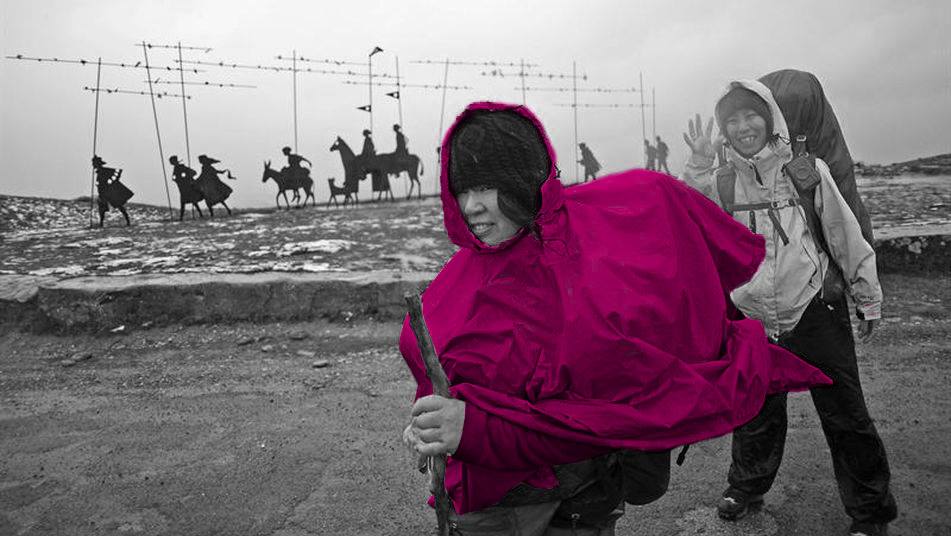
Aztán az utcazenélést zárójelbe téve született egy B terv a túlélésre, Céhá ugyanis végzettsége szerint nem tudom mi, de azt tudom, hogy szokott animált klipeket rendezni, meg vicces videókat is vágott már életében. Íme, egy-egy mind a kettőből:
(Niburta - Awakening, 2012)
("Sztárinterjú", 2010)
Szóval az ötlet adta magát: csináljunk vlogot vagy dokufilmet a zarándoklatról, és kerítsünk a projekthez támogatókat.
Akár viszünk magunkkal sok cuccot, akár nem, számomra egyvalami már változtathatatlan volt: csacsi az lesz!
Aztán csacsi lett is, Céhá viszont nem. 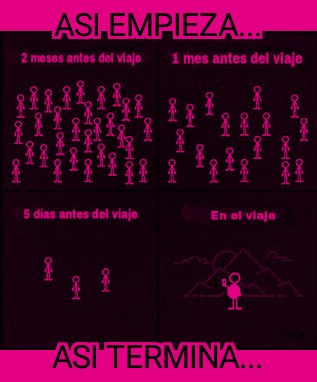 (ÍGY KEZDŐDIK… 2 hónappal az utazás előtt; 1 hónappal az utazás előtt; 5 nappal az utazás előtt; Az utazás. ÍGY VÉGZŐDIK…)
(ÍGY KEZDŐDIK… 2 hónappal az utazás előtt; 1 hónappal az utazás előtt; 5 nappal az utazás előtt; Az utazás. ÍGY VÉGZŐDIK…)
Úgyhogy videoblog sem. Helyette lett mostanra ez.
Pedig már a projektterv szinopszisát is megírtam, amivel szponzorokat vadásztunk volna. Ez a leírás lesz majd a következő poszt. Merthogy a projekt, amit akkor megírtam, tökéletesen megvalósult, csak épp film nem lett belőle, meg semmiféle dokumentáció. Csak az életem 180 fokos fordulata.
Jól is van ez így, kösz a tippet, Céhá brader! A tiszteletedre neveztem el a szamarat Petinek.
Ja, nem. Rocinanténak neveztem el. Na, mindegy…
Azért néha bánom, hogy nem adtalak el inkább:
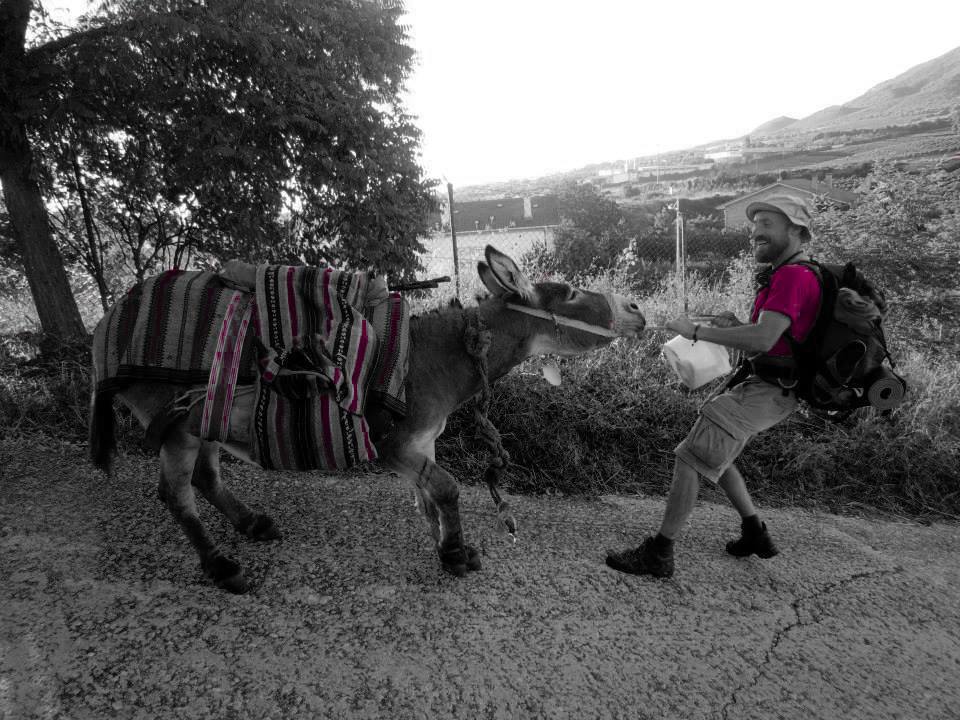
:D
---------------------------------------------------------------------------------------------------------------------------
ENG:
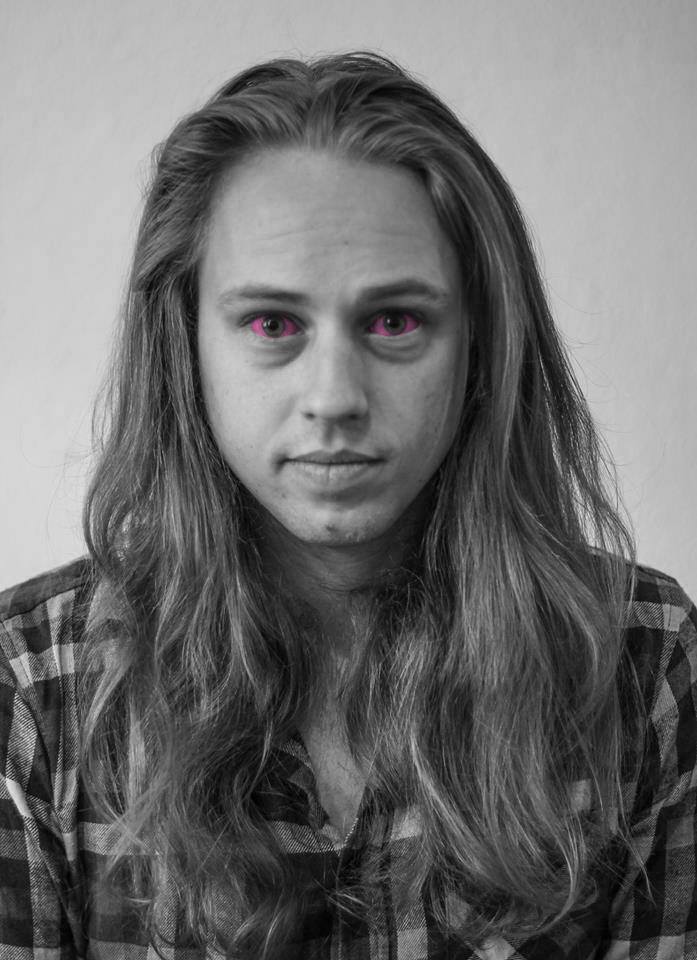 The attractive lady in the photo is Péter Lerch, nicknamed CH.
The attractive lady in the photo is Péter Lerch, nicknamed CH.
Once he told me: „You know you’re one of my best friends, but I would sell you any time for a mediocre fuck.
Obviously I answered that I would sell him even for a fuck that sucks.
Gold chained gipsy pimps have frequently offered me their moderate-number-of-teeth girls for a quickie in the doorways, since in exchange they would have needed an idler of a modest stature from Miskolc Steel City with whom it’s possible to visit metal concerts, dead drunk. I was thinking about György Petri’s poem „To reach the sunlit path” (the content of the referred link is to be read!), and since that, khm, I was so attracted to the opportunity of a semi-soft plugging, wrapped in a cherry-flavoured, „LOVE”-branded condom hanging down like an elephant trunk, into a sticked-out bottom carelessly wiped out after unloading… but finally I haven’t sold CH. Instead I told him to join me for El Camino.
Yeah, but none of us has money. Never mind, then we will hitchhike and play street music. Boxguitar, a small conga, didgeridoo etc., possibly we learn on the way how to play on at least one of them…
„Fine by me – answered he – but I sure will not carry all that many stuff. We should get a donkey or something.”
…
This…
…IS THE BEST IDEA EVER!!!
This last piece of puzzle was missing from my vision of future, and now I got it.
Camino with a donkey – it seems so obvious and self-evident that many people must do it, it can’t be that Péter Lerch /aged 25, Miskolc (Hungary), unemployed/ is the inventor of it. So I immediately googled it and, indeed, throughout the history many pilgrims have gone to St. James’ tomb on a donkey, or at least have put their packages on donkeys’ back.
The famous pilgrim statues of Alto de Perdón commemorate the tradition of pilgrimage with animals. The monument demonstrates the pilgrims of the successive historical ages. Pilgrims of the 20th century are crawling in the end, and in this photo the pilgrims of the 21st century (i.e. the Koreans) are covering exactly a packed donkey statue:

Then putting the idea of the street music into a bracket, „plan B” has been born to survive, since CH is… actually I don’t know what he is according to his degree, but I know that he directs music videos (for example this one), and he has already cut funny videos before (like that one).
So the idea was given: do a vlog or a documentary of the pilgrimage and get sponsors to the project.
Either we pack many stuffs, or not, I was determined in one thing: donkey there will be!
Then donkey there was, but no CH.

(THIS IS HOW IT STARTS... 2 months before the trip; 1 month before the trip; 5 days before the trip; The trip. THIS IS HOW IT ENDS…)
So neither was a video blog. Instead, for now this.
Though I have already written the synopsis of the project plan, to hunt sponsors. This description will be the next post. For me it’s extremely interesting to read it now, because the project I wrote, was perfectly realized. Only no documentary became of it, neither any other documentation. But became the 180 degree turn of my life...
Well this is so, thanks for the tip, CH brother! I named the donkey Peti for your honor… Or no. He is called Rocinante, sorry. Whatever.
Anyway, sometimes I regret that I didn’t sell you instead:

:D
HUN:
Roland vagyok, filozófia-magyar szakos bölcsész és tanár, pszichológus és szamaras csöves.
Szerintem a világ alapvetően szép és jó hely, de el van cseszve, és a mi dolgunk megjavítani azt.
Ha ezzel a kijelentéssel egyetértesz, jó helyen jársz.
Egyénenként a külvilágon változtatni csak nagyon keveset tudunk, de a belső világunkon annál többet, és végeredményben összeadódva ennek lesz hatása a külvilágra is.
Két és fél éve kötődik az életem a Camino de Santiagohoz, azaz a Szent Jakab zarándokúthoz, ahol szamarammal, Rocinantéval élek. Ennek a két és fél évnek megvoltak a különböző szakaszai és szünetei, örömei és nehézségei, magaslatai és mélységei. Zarándokoltam és életmódszerűen is laktam az úton, megjártam oda- és visszafelé, volt közben egy másik szamaram is, sétáltam alternatív útvonalakon, éltem kommunában, dolgoztam különféle zarándokszállásokon önkéntesként és fizetésért is, voltam utcazenész és tojásfestő üzenetfutár; nagyrészt egyedül Rocinantéval, de legutóbb egy darabig párban és további állatokkal kiegészülve is – és mindeközben lediplomáztam pszichológusként… Úgy érzem, most jött el az ideje, hogy mindezt megkíséreljem kifelé is kommunikálni.
Azon gondolkodom, hogy jövőre hazasétálok Rocinantéval Magyarországra, Portugáliából vagy Spanyolországból, és az a túra talán egyébként is megérhet némi nyilvánosságot.
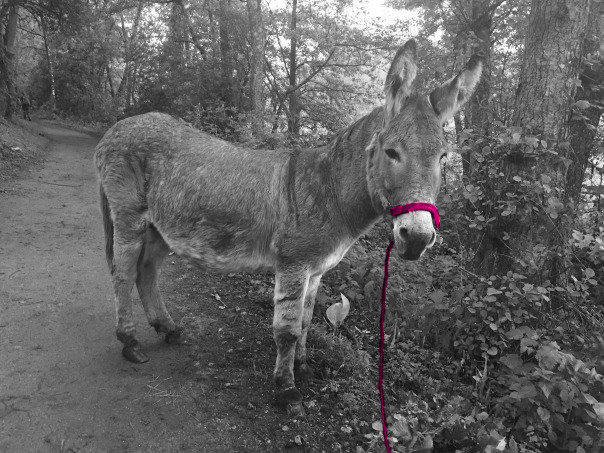
Rocinante az egyik legérdekesebb viszony az életemben. A másik a kattant olasz csajom. Ez utóbbi végkimenete nyomán vagyok éppen spirituális és egzisztenciális válságban, holott pont egy ilyen válságot megoldandó indultam neki a Caminonak. Biztos egy transzperszonális pszichoterápiára lenne szükségem, de arra nincs pénzem, mivel az előző krízis megoldása az volt, hogy a pénzhasználatot a minimális szint alá csökkentő életmódra váltok: szamaras hobo lettem.
Ilyenkor most mi van?
Most az van, hogy személyes krízisemet másodszor is a társadalmi védőháló álbiztonságát nélkülözve kell megoldanom; ezúttal írni fogok. Meg fényképezni, meg videóra beszélni (azaz mindent, amit eddig kerültem), ventilálni, ahogy csak tudok – de elsősorban írni.
Hogy ezt valaki el is olvassa, ahhoz állítólag ki kell jelölnöm a tematikát. Nézzük csak, vannak ugyebár utazós illetve túrázós blogok, ezen belül caminos blogok. Vannak aztán életmód blogok és pszichológiai blogok, spirituális blogok, külföldön élős blogok, meg vannak állatos blogok is. Úgyhogy a célközönség adott: olyan túrázó zarándokpszichológusokhoz szólok, akiknek életmódjuk egy vallásos-spirituális utazás külföldön egy állattal… Ja, hogy az csak én vagyok egyedül?! Akkor hozzád szólok, ha azt keresed, aki csak Te vagy, egyedül!
Bevezetésül álljon itt egy rövidke mese, ami még valamikor a kezdetekkor, 2013 szeptemberében pattant ki a fejemből, amikor éppen Estella község határában sátraztam egy bő hétig, és reggelente magyar népdalokat furulyáztam az elhaladó zarándokoknak, hogy összegyűljön a hiányzó összeg a szamárra (6 nap alatt lett meg a hiányzó 400 euro, életem „melója” volt, de ezekről majd később…)
A tücsök és a hangya
Egyszer volt, hol nem volt, a tücsök egész nyáron csak bulizott meg chillezgetett a mezőn, amíg a hangya ott húzta az igát mellette.
Aztán jött a tél, és a tücsök éhezett, mert nem volt kajája begyűjtve, ezzel szemben a hangya meg jól megdöglött, mivel a közönséges fekete hangya (lasius niger) dolgozóinak átlagos élettartama 4-6 hónap.
Így megy ez. 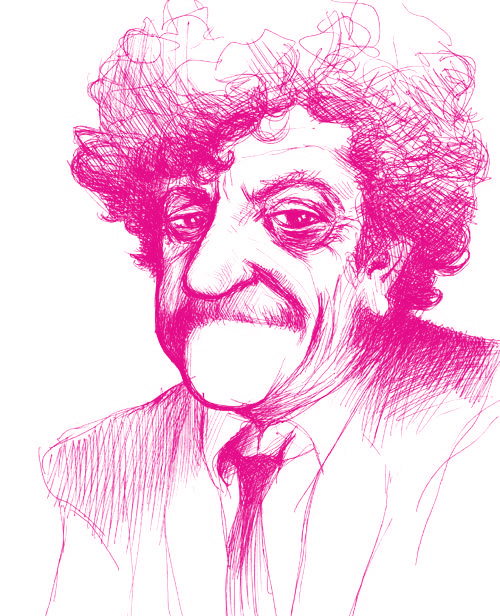
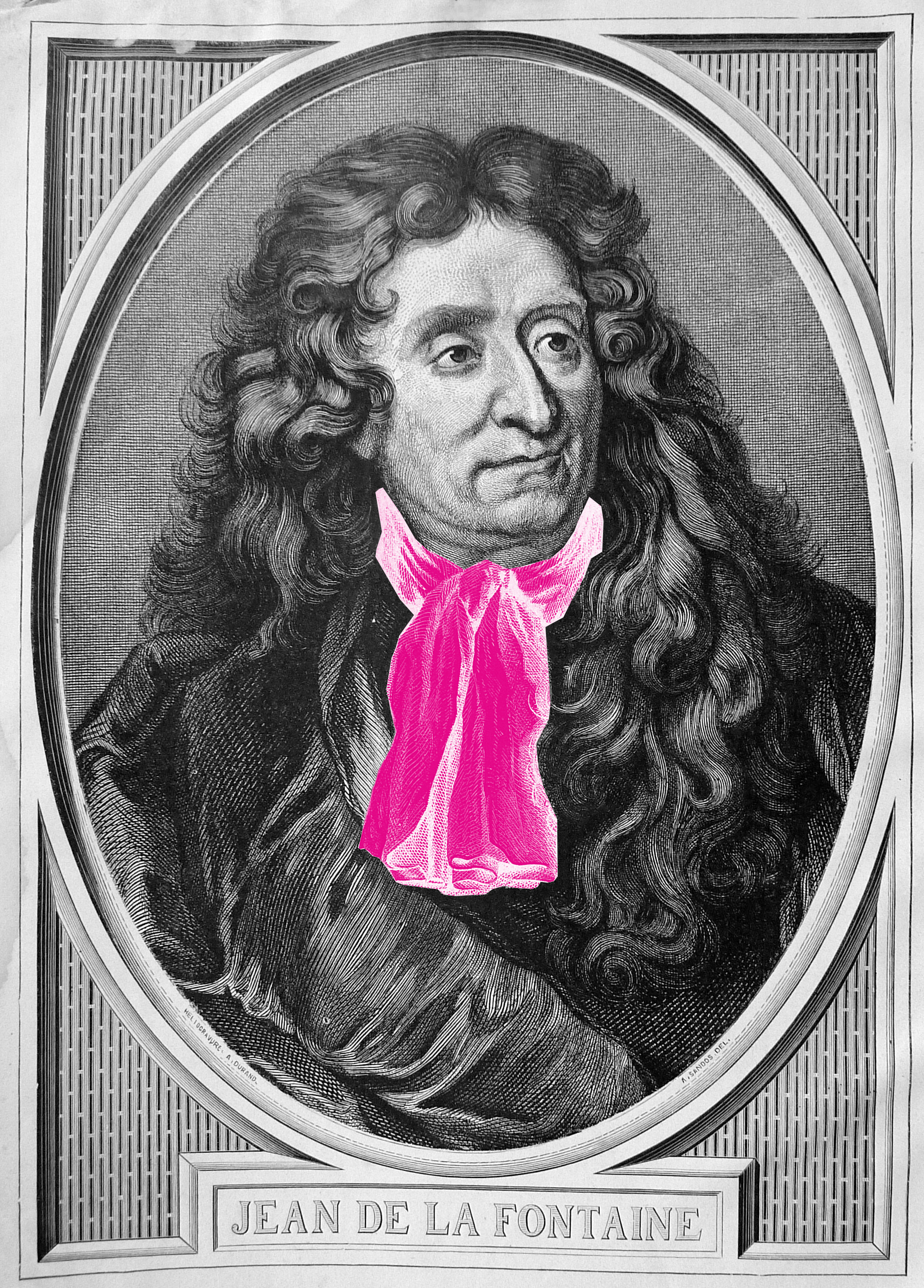
Az állatmesék és az embermesék egy-egy nagy fejedelme: La Fontaine és Vonnegut
-----------------------------------------------------------------------------------------------------------
ENG:
I’m Roland, a Master and Teacher of Human Sciences in Philosophy and Hungarian Grammar&Literature, a psychologist and a bum with a donkey.
I believe the world is basically a beautiful and good place, but it’s fucked up, and it’s definitely our job to fix it.
If you agree with this statement, you arrived at the right place.
Individually, we are only capable to change the outside world quite slightly, in contrast to our inside world on which we have much more influence, and these ultimately add up having a consequence on the outside world, too.
It’s been 2 and a half years that my life is connected to the Camino de Santiago, i.e. the St. James pilgrimage route, where I live with my donkey, called Rocinante. This 2 and a half years had their various stages and pauses, joys and difficulties, heights and depths. I’ve pilgrimaged and also lived on the road as a way of life, gone through it back and forth, meanwhile had another donkey, walked on alternative routes, lived in communes, worked at different pilgrim hostels as a volunteer as well as having been employed, been a street musician and even an egg-painter postman; mostly alone with Rocinante as a company, but lately it’s been two of us with a girl and joined by other animals – and, in the meantime I’ve graduated as a psychologist… I feel like now is the right time to speak about all of these things in public.
Recently I’m thinking about walking home to Hungary with Rocinante, departing from Portugal or Spain, and by the way, this trip would probably worth some publicity.

Rocinante is one of the most interesting relations in my life. The other is my Ita’ ex-girl. The conclusion of that relationship is the reason for my being in just a spiritual and existential crisis, although it’s been a similar crisis which has set me off to El Camino, to be solved. What I would need now is probably a transpersonal psychotherapy, but I don’t have money for this, as the solution of the previous crisis was precisely to change my lifestyle reducing the use of money below the minimum level: I became a bum with a donkey.
Now what?
Now that my second crisis will be solved again by ignoring the false security of the social safety nets; this time I’ll write. And take photos as well as speak on videos (i.e. all the things I avoided so far), ventilate in various ways – but primarily I’ll write.
Let’s try to specify the subject. There are traveler’s and hiker’s blogs, including the Camino blogs. Furthermore there are lifestyle blogs, religious-spiritual blogs and psychology blogs, there are ‘living abroad’ blogs and there are the animal-related blogs. So the target audience is given: I address those hiking psycho-pilgrims, whose lifestyle is a spiritual trip abroad with an animal. Oh, that’s just me alone?! Then I speak to you who is searching for whom You are, alone!
As an introduction, here’s a short fable which came to my mind when starting my trip, September of 2013, camping at the border of Estella town for a long week and playing Hungarian folk songs on the flute for the passing pilgrims so that I collect the missing sum for my donkey (it took only 6 days to collect the missing 400 Euros, it was the job of my life, but about these later…)
The Ant and the Cricket
Once upon a time, the cricket was partying the whole summer and chilling out in the fields, while the ant was working hard beside him.
Then came the winter and the cricket was starving, because he had nothing harvested to eat, in contrast with the ant who was just completely dead, as the average life expectancy of the ordinary black ant (lasius niger) is 4-6 months.
And so it goes.
